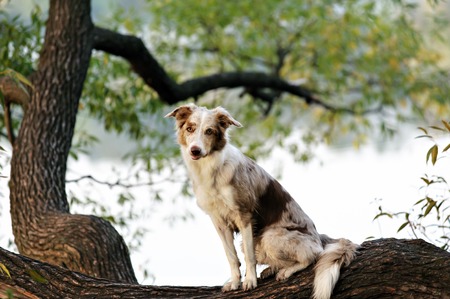1. Understanding the Unique Temperature Needs of Exotic Pets
Exotic pets come from a wide range of natural habitats, from tropical rainforests to arid deserts. Unlike common household pets like cats and dogs, exotic animals rely heavily on their environment to regulate body temperature. Understanding their specific needs is crucial for their health and well-being.
How Natural Habitats Influence Temperature Needs
Each exotic pet species has evolved to thrive in a particular climate. Reptiles, amphibians, and even some small mammals depend on external heat sources because they are ectothermic, meaning they cannot regulate body temperature internally. If their environment is too cold or too hot, it can lead to severe health issues.
Examples of Temperature Requirements by Habitat
| Pet Type | Natural Habitat | Ideal Temperature Range |
|---|---|---|
| Bearded Dragon | Australian Deserts | 95-105°F (Basking), 75-85°F (Cool Zone) |
| Crested Gecko | Tropical Forests of New Caledonia | 72-78°F |
| Burmese Python | Southeast Asian Rainforests | 80-88°F |
| Dwarf Hamster | Eurasian Grasslands | 65-75°F |
The Dangers of Incorrect Temperatures
If an exotic pet is kept outside its ideal temperature range, it can suffer from various health problems. Cold temperatures can slow down digestion, weaken the immune system, and cause lethargy in reptiles. On the other hand, excessive heat can lead to dehydration and overheating, which may be fatal.
The Importance of Providing Proper Heating and Cooling
A well-maintained habitat with appropriate heating and cooling elements ensures that exotic pets remain comfortable and healthy. Pet owners should invest in thermostats, heat lamps, UVB lighting, and cooling areas to mimic their pets natural environment as closely as possible.
2. Health Risks Associated with Improper Temperature Regulation
Maintaining the right temperature is crucial for exotic pets, as they rely on external heat sources to regulate their body temperature. If their environment is too hot or too cold, it can lead to serious health problems. Below are some common health issues caused by improper temperature regulation.
Respiratory Infections
Many reptiles and amphibians are highly susceptible to respiratory infections when exposed to temperatures that are too low. Cold environments weaken their immune system, making them more vulnerable to bacterial and fungal infections. Signs of respiratory infections include:
- Wheezing or labored breathing
- Nasal discharge or bubbles around the nostrils
- Lethargy and lack of appetite
Metabolic Disorders
Temperature plays a direct role in digestion and metabolism for many exotic pets. When temperatures are too low, their metabolism slows down, leading to problems such as improper digestion and nutrient absorption. On the other hand, excessive heat can cause dehydration and stress. Common metabolic disorders include:
| Disorder | Cause | Symptoms |
|---|---|---|
| Metabolic Bone Disease (MBD) | Lack of proper heat and UVB exposure | Soft or deformed bones, weakness, tremors |
| Anorexia & Digestive Issues | Inadequate temperature for digestion | Lack of appetite, bloating, constipation |
| Dehydration & Overheating | Sustained high temperatures without cooling areas | Panting, lethargy, sunken eyes |
Stress and Behavioral Problems
An unsuitable temperature range can cause significant stress in exotic pets. When they cannot regulate their body temperature properly, they may exhibit unusual behaviors such as excessive hiding, aggression, or lethargy. Long-term stress weakens their immune system and makes them more prone to illnesses.
Signs of Temperature-Related Stress:
- Pacing or restlessness in enclosures
- Avoiding warm or cool areas entirely
- Dramatic changes in activity levels
- Dull skin color in reptiles (a sign of poor health)
The Importance of Monitoring Temperature Daily
The best way to prevent these health risks is by consistently monitoring your pet’s habitat temperature using reliable thermometers and thermostats. Ensuring a proper thermal gradient—where one side of the enclosure is warmer than the other—allows your pet to self-regulate its body heat effectively.

3. Creating the Ideal Temperature Environment
Maintaining the right temperature for your exotic pet is essential for their health and comfort. Setting up the perfect enclosure involves using proper heating, cooling, and monitoring equipment to ensure a stable environment. Below, we’ll go over the key components needed to create an optimal habitat.
Choosing the Right Heating Equipment
Different exotic pets require different types of heating. Here are some common heating options and their best uses:
| Heating Method | Best For | Description |
|---|---|---|
| Ceramic Heat Emitters | Reptiles, amphibians | Provides steady heat without light, ideal for maintaining nighttime temperatures. |
| Heat Mats | Small reptiles, invertebrates | A placed-under-tank heater that provides gentle warmth from below. |
| Basking Lamps | Lizards, turtles | Mimics natural sunlight and creates basking spots for thermoregulation. |
| Radiant Heat Panels | Larger enclosures, snakes | A safe overhead heating option that distributes warmth evenly. |
The Importance of Proper Cooling
If your pet’s enclosure becomes too warm, they may suffer from heat stress. To prevent this, consider these cooling techniques:
- Misting Systems: Helps regulate humidity and cools down tropical environments.
- Ceramic Tiles or Cool Zones: Provides a cooler surface for pets to rest on.
- Avoid Direct Sunlight: Keep enclosures away from direct sunlight to prevent overheating.
- Fans and Ventilation: Improves airflow and prevents heat buildup in enclosed spaces.
The Role of Temperature Monitoring
You can’t manage what you don’t measure! Using temperature monitoring tools helps maintain a stable environment for your pet. Here are some recommended devices:
| Monitoring Tool | Description | Best Use Case |
|---|---|---|
| Digital Thermometers | Easily displays current temperature readings inside the enclosure. | A must-have for all exotic pet owners. |
| Thermostats with Probes | Keeps heating elements at a consistent temperature by automatically adjusting power. | Ideal for reptiles that need precise heat control. |
| Infrared Temperature Guns | A quick way to check surface temperatures in different areas of the enclosure. | Basking spots and substrate checks. |
| Hygrometers (for humidity) | Makes sure both temperature and humidity levels are within safe ranges. | Tropical species that require high humidity. |
Troubleshooting Common Temperature Issues
If you notice temperature fluctuations in your pet’s enclosure, try these solutions:
- If its too cold: Increase wattage of heating elements, add insulation around the enclosure, or use multiple heat sources.
- If its too hot: Adjust heating placement, provide more ventilation, or reduce wattage of bulbs/heaters.
- If there are drastic fluctuations: Use a thermostat to regulate heat output more effectively.
- If humidity affects temperature: Balance misting schedules and ventilation to maintain stability.
A well-regulated temperature environment is crucial for your exotic pet’s well-being. By selecting the right heating and cooling methods and consistently monitoring conditions, you can provide a comfortable and healthy habitat for your pet to thrive in.
4. Seasonal and Regional Considerations
Climate differences across the United States can significantly impact how exotic pets should be cared for, especially when it comes to temperature regulation. From the dry heat of Arizona to the freezing winters of Minnesota, pet owners must adjust their care routines based on their local climate.
Understanding Regional Climate Differences
The U.S. has a wide range of climates, each presenting unique challenges for exotic pet care. Below is a general overview of how different regions can affect temperature management:
| Region | Climate Characteristics | Temperature Regulation Tips |
|---|---|---|
| Northeast (e.g., New York, Massachusetts) | Cold winters, humid summers | Use heating pads or ceramic heat emitters in winter; ensure proper ventilation and cooling methods in summer. |
| Southeast (e.g., Florida, Georgia) | Hot and humid year-round | Focus on cooling techniques like fans and air conditioning; monitor humidity levels to prevent respiratory issues. |
| Midwest (e.g., Illinois, Minnesota) | Extreme seasonal changes | Adjust heating and cooling methods throughout the year; use insulated enclosures during winter. |
| Southwest (e.g., Arizona, Texas) | Hot and dry climate | Provide plenty of shade and hydration; use misting systems or evaporative coolers if necessary. |
| West Coast (e.g., California, Oregon) | Mild temperatures with coastal humidity | Maintain stable indoor temperatures; adjust humidity control based on specific pet needs. |
Best Practices for Adjusting Temperature Accordingly
Invest in Reliable Temperature Monitoring Tools
A digital thermometer and hygrometer are essential for keeping track of your pet’s environment. Smart thermostats or automated heating and cooling systems can also help maintain consistent conditions.
Create a Controlled Environment Indoors
If you live in an area with extreme temperature fluctuations, consider setting up a dedicated space for your exotic pet where you can regulate heat and humidity more effectively.
Adapt Seasonally to Your Pet’s Needs
During winter months, ensure proper heating elements such as under-tank heaters or ceramic heat lamps. In summer, increase air circulation using fans while avoiding direct airflow on your pet’s enclosure.
Monitor Your Pet’s Behavior for Signs of Discomfort
If your pet is lethargic, hiding excessively, or refusing to eat, these could be signs that the temperature is not optimal. Adjust accordingly and consult a veterinarian if needed.
Understanding how regional climates affect temperature regulation is crucial for ensuring your exotic pet stays healthy and comfortable year-round. By making seasonal adjustments and monitoring environmental conditions closely, you can provide the best care possible no matter where you live.
5. Best Practices for Monitoring and Adjusting Temperature
Maintaining the right temperature for your exotic pet is crucial for their health and well-being. Since different species have unique temperature needs, it’s important to use the right tools and techniques to create a stable environment. Below are some best practices to help you monitor and adjust temperatures effectively.
Use Reliable Thermostats
A thermostat is an essential tool for regulating temperature in your pet’s habitat. Digital thermostats provide accurate readings and allow you to control heating elements such as heat lamps or heating pads. Investing in a high-quality thermostat ensures that the temperature remains consistent without frequent manual adjustments.
Provide Proper Heating Equipment
Different exotic pets require different heating solutions. Some of the most common options include:
| Heating Equipment | Description | Best For |
|---|---|---|
| Heat Lamps | Provide direct heat and light, often used for reptiles. | Lizards, turtles, snakes |
| Ceramic Heat Emitters | Emit heat without light, ideal for nighttime heating. | Nocturnal reptiles, amphibians |
| Under-Tank Heaters | Create a warm surface on the floor of the enclosure. | Tarantulas, geckos, small snakes |
| Radiant Heat Panels | A safe and efficient way to provide steady warmth. | Larger enclosures, arboreal species |
Create a Temperature Gradient
A temperature gradient allows your pet to move between warmer and cooler areas as needed. To achieve this:
- Basking Area: Position a heat source on one side of the enclosure to create a warm zone.
- Cooled Zone: Keep the opposite side slightly cooler so your pet can regulate its body temperature naturally.
- Mild Transitions: Avoid sudden temperature shifts by ensuring smooth gradients across the habitat.
Regularly Monitor Temperature Levels
You should check temperature levels daily using digital thermometers placed at different points in the enclosure. This helps ensure that both warm and cool areas remain within safe ranges for your pet’s species.
Tips for Accurate Temperature Monitoring:
- Use Multiple Thermometers: Place one near the basking area and another in the cooler zone.
- Avoid Direct Sunlight: Keep thermometers away from direct light sources to prevent false readings.
- Check Readings Regularly: Make it a habit to verify temperatures at different times of the day.
Avoid Overheating and Cold Spots
If temperatures rise too high or drop too low, it can harm your pet. Using automatic thermostats with built-in safety shutoffs can prevent dangerous fluctuations. Additionally, insulating enclosures properly during winter months helps maintain stable conditions.
Caring for an exotic pet requires careful attention to their environmental needs. By using thermostats, proper heating equipment, and monitoring tools, you can create a comfortable and safe habitat that supports their health and longevity.
